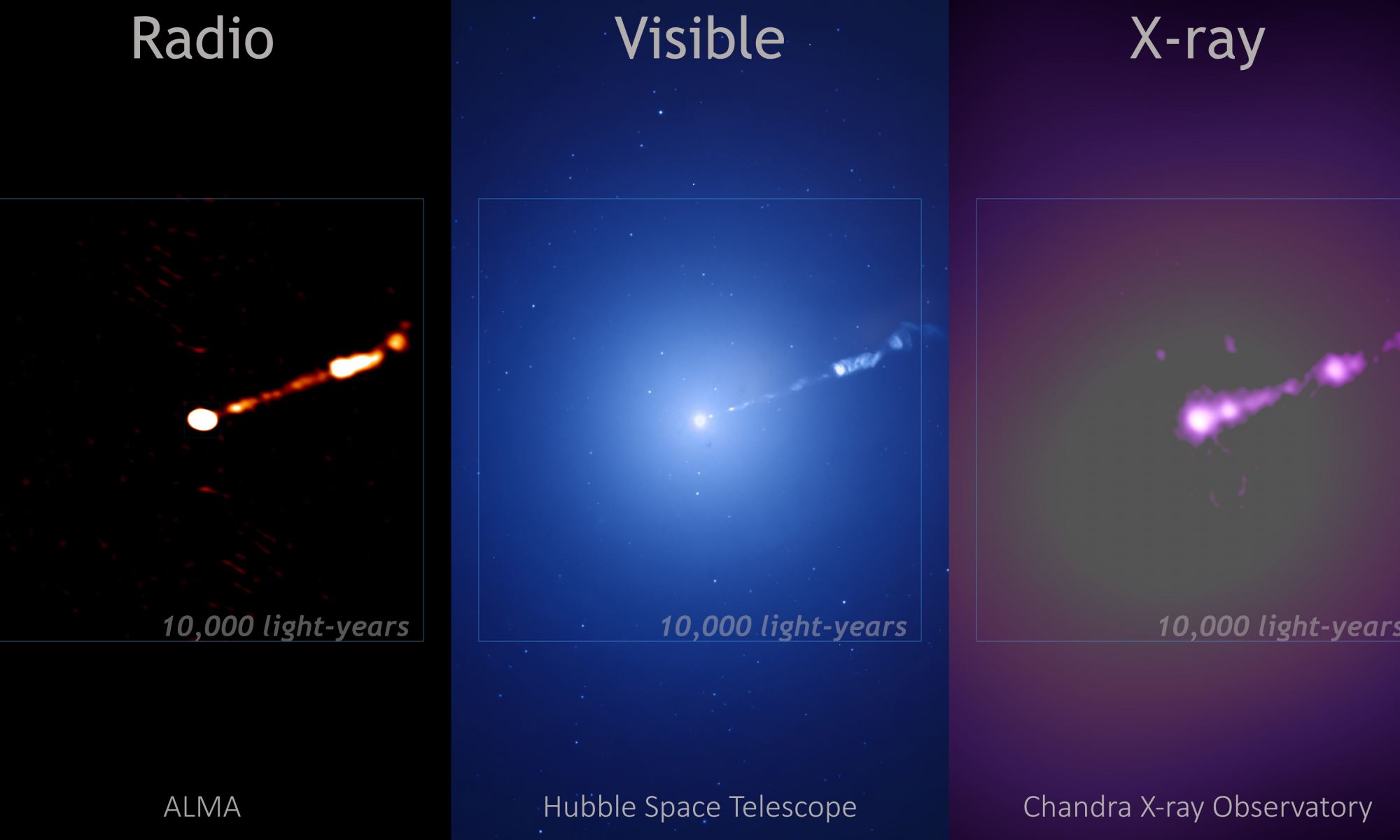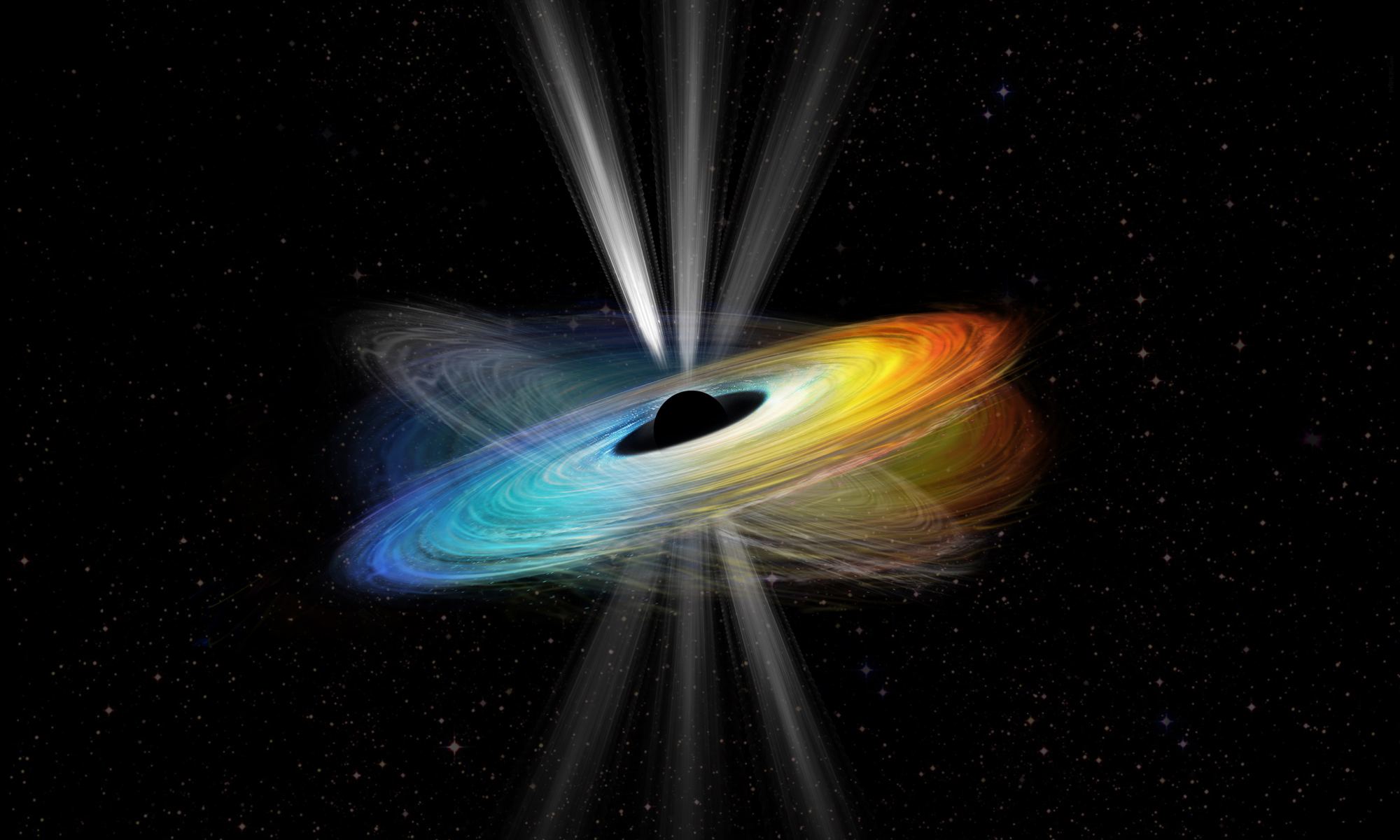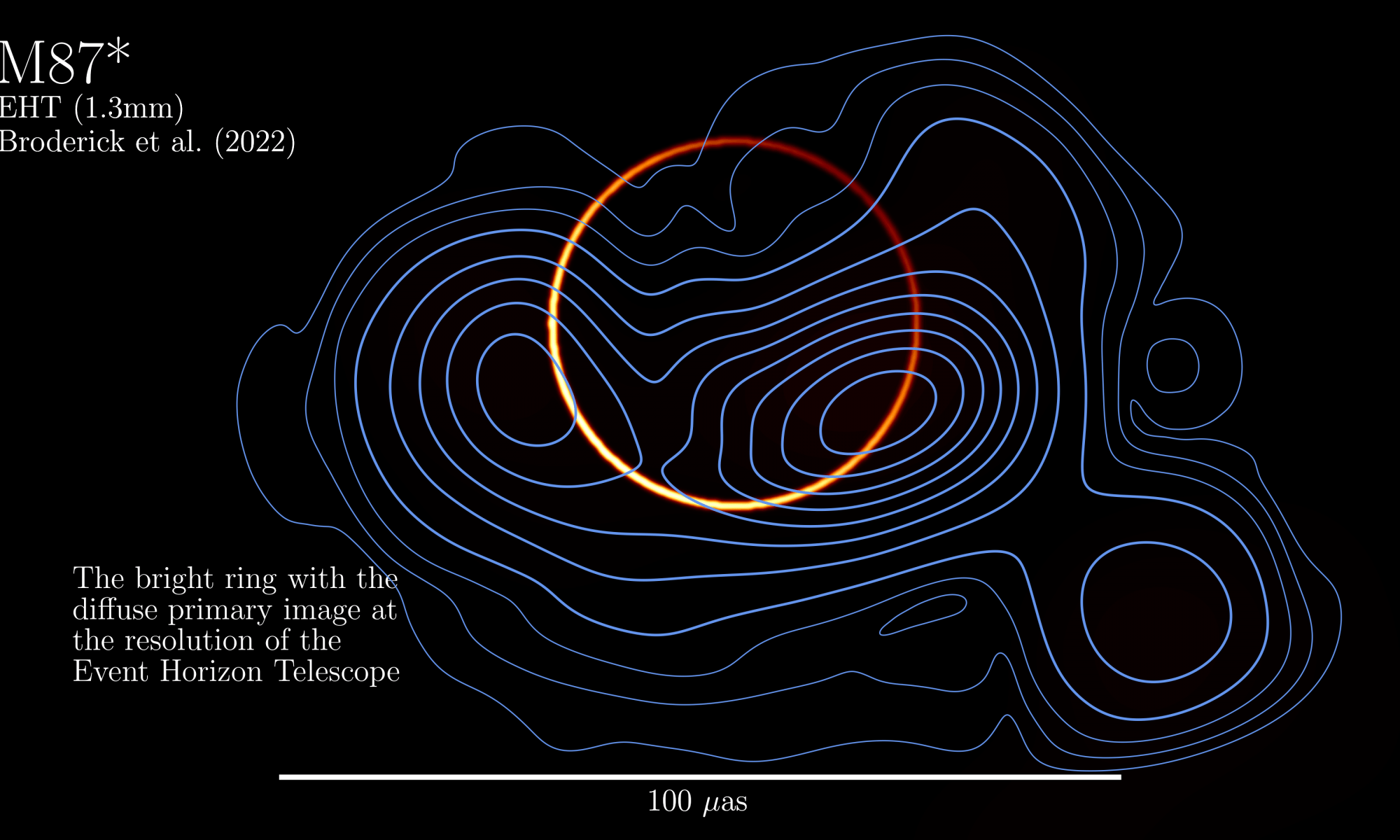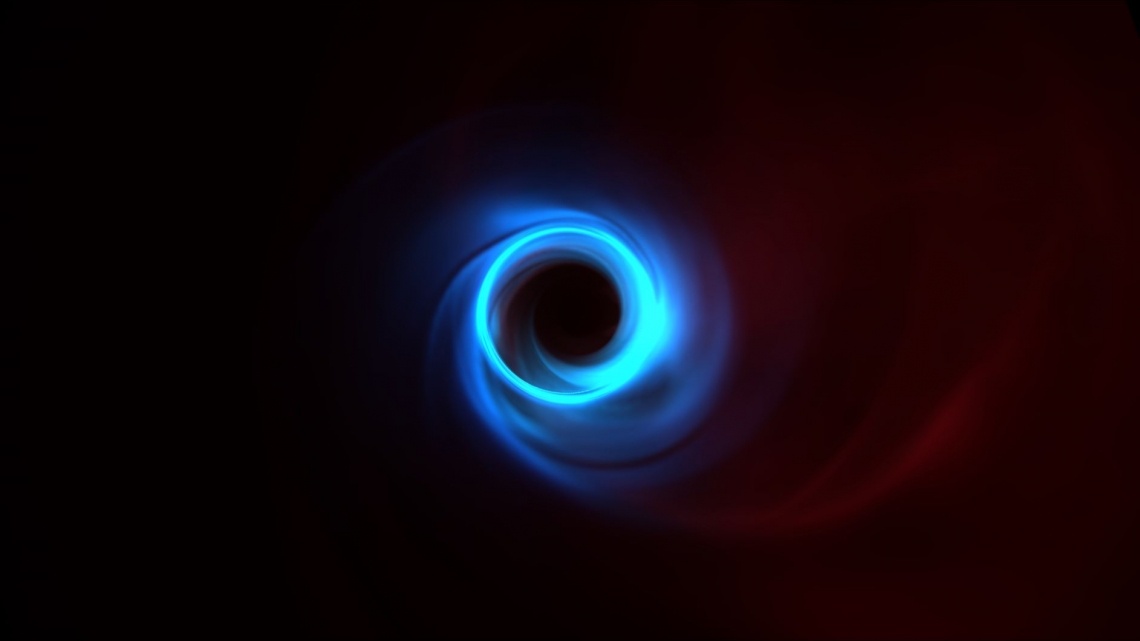Fifty-five million light years from Earth there is a massive elliptical galaxy known as Messier 87, or M87 for short. It was cataloged by Charles Messier in the 1700s, along with 102 other fuzzy objects in the sky that were definitely not comets. It was confirmed to be a galaxy in the early 1900s, and by the mid-twentieth century, it was known to be a powerful radio source. But these days it is most widely known for the supermassive black hole deep in its core. Called M87*, it is the first black hole directly observed by astronomers. The first image of M87* was released in 2019, and was based on observations taken by the Event Horizon Telescope (EHT) in 2017. Now a new image based on 2018 data has been released. The similarities and differences between the two images tell us a great deal about M87* and black holes in general.
Continue reading “M87*'s Event Horizon Image. One Year Later”M87*'s Event Horizon Image. One Year Later






